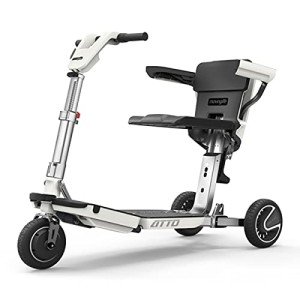10 Mobility Aids Tricks All Experts Recommend
Understanding Mobility Aids: Enhancing Independence and Quality of Life
As society continues to age and individuals increasingly seek methods to maintain independence, the need for mobility aids has never ever been more important. Mobility aids, which incorporate a variety of devices developed to assist individuals with walking or moving, play a vital role in promoting mobility, improving security, and improving total lifestyle. This article will check out the numerous kinds of mobility aids, their advantages, factors to consider for selection, and address some regularly asked questions.
Types of Mobility Aids
Numerous mobility aids are readily available, each developed to address specific requirements. The following table sums up a few of the most typical types of mobility aids and their features.
Type of Mobility Aid
Description
Best Suited For
Key Features
Walking sticks
A portable stick offering support and balance.
Individuals who need minimal help.
Light-weight, portable, adjustable height.
Walkers
Four-legged frames providing stability.
Those needing considerable support while walking.
Foldable, some with wheels, added security features.
Rollators
Wheeled walkers with a seat for resting.
Individuals needing mobility with the option to rest.
Brakes, baskets for individual products, adjustable height.
Wheelchairs
Chairs with wheels for individuals with limited mobility.
Those not able to walk or needing comprehensive assistance.
Manual or powered options, adjustable seating.
Scooters
Motorized devices for larger distances.
People with restricted endurance however requiring self-reliance.
Various sizes and designs, often portable.
Crutches
Support devices put under the arms or lower arms.
Individuals recuperating from lower limb injuries.
Adjustable, lightweight, requires upper body strength.
Stairlifts
Mechanical devices for moving between floors.
Users facing difficulties in multi-level homes.
Customizable for various staircases, automated.
Benefits of Mobility Aids
Mobility aids offer a range of advantages that can considerably enhance the lives of people dealing with mobility difficulties. Some noteworthy benefits include:
Increased Independence: Mobility aids empower people to move freely without relying on others for help, therefore enhancing their self-confidence and self-esteem.
Enhanced Safety: Using mobility aids can lower the risk of falls and injuries, especially for older adults or those with balance concerns.
Enhanced Quality of Life: By helping with mobility, individuals can engage in social activities, attend events, and delight in life more totally, contributing to much better psychological and mental health.
Rehabilitation Support: After surgical treatment or injury, mobility aids offer required support and stability, helping in healing and rehabilitation procedures.
Ease of access: Many mobility aids are designed to be used both indoors and outdoors, making sure that people can navigate various environments with ease.
Factors to Consider When Choosing Mobility Aids
Picking the appropriate mobility help needs cautious consideration of a number of elements, including:
Factor
Factors to consider
User's Needs
Assess the level of mobility required; consider whether the user needs momentary or long-lasting assistance.
Physical Limitations
Examine the user's strength, balance, and coordination to figure out the very best type of aid.
Setting
Think about the primary environments where the aid will be utilized, such as home, outdoors, or specific surfaces.
Weight and Portability
Ensure that the picked gadget is workable regarding transportability and storage, especially for outdoor use.
Budget
Mobility aids come in a variety of prices; think about insurance protection and readily available financing alternatives.
Adjustability
Choose aids that can be adjusted for height and convenience to accommodate growth or changing needs.
Often Asked Questions About Mobility Aids
1. How do I know if I require a mobility aid?
Numerous elements can indicate the need for a mobility aid, such as difficulty strolling or balancing, tiredness while standing, or a current surgery affecting mobility. Consulting with a health care expert can provide assistance customized to individual needs.
2. What types of mobility aids are covered by insurance?
Protection differs between insurance providers, however the majority of provide alternatives for durable medical equipment, which generally includes wheelchairs, walkers, and some kinds of walking sticks. Consult your insurance service provider for particular coverage information.
3. Can mobility aids be used outdoors?
Yes, lots of contemporary mobility aids are created for outdoor usage. Rollators, scooters, and some walkers are equipped with functions for stability and ease of usage on various terrain.
4. How do I preserve my mobility aid?
Regular maintenance includes inspecting for any wear and tear, making sure that parts such as wheels, brakes, and frames are functioning correctly, and cleaning up the devices as required. Following the manufacturer's guidelines is important for security.
5. Is there a danger of becoming depending on mobility aids?
While some users might end up being reliant on mobility aids, they are created to promote independence and mobility. Slowly using franciswillia.top can improve confidence and aid keep physical strength and coordination.
Mobility aids are invaluable tools that empower people to get rid of physical obstacles, promoting self-reliance and boosting lifestyle. By comprehending the numerous kinds of mobility aids readily available, their advantages, and essential aspects for factor to consider, households and caregivers can make educated choices that best fulfill the needs of their enjoyed ones. With the ideal assistance, those with mobility challenges can lead fulfilling and active lives, totally free to check out the world around them.
